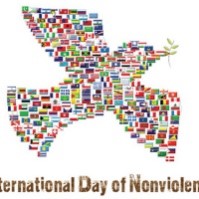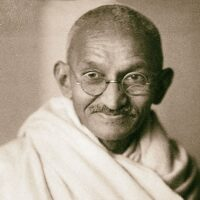World Day of NONVIOLENCE
Like Gandhi, we choose dialogue
and the “ecology of change” for conflict resolution
It is already fifteen years since 2 October that we commemorate Gandhi and his great political-philosophical legacy, the satyagraha, according to which the power of truth lies in non-violence. Never before, with the winds of war also blowing through Europe, do we need to look to the Indian leader and his radical rejection of armed struggle. For Gandhi it is actions that count, one must always act to set a good example: ‘Be the change you want to see in the world’.
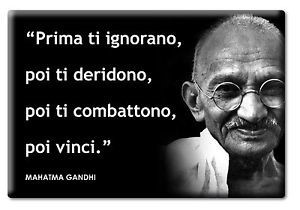
“First they ignore you, then they mock you, then they fight you, then you win” Mahatma Gandhi
Immagine: https://www.pinterest.it
Despite his extraordinary notoriety, his actual strategies to promote social change in India, through several levels of radical transformation, are much less known to us:
- some consider him to be a spiritual figure, who exercised his leadership only through moral persuasion;
- others have heard of the most famous acts of civil disobedience carried out by him and his followers to counter British imperialism;
- still others portray him as a political figure, sitting at the negotiating table before officials of the British Empire.
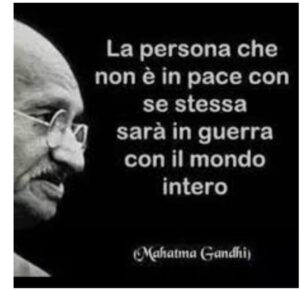
“The person who is not at peace with himself will be at war with the world”Mahatma Gandhi
Immagine: https://www.bellissimeimmagini.it
“Gandhian’s method of bringing about social transformation was more interesting than any of these aspects might suggest. What makes him such a unique figure in the history of social movements is his ability to bring together different types of organisation. Gandhi was able to cultivate what can be called a healthy ‘ecology of change’ in which groups with different theories and practices for societal change could expand the capacities of the movement as a whole.” (source:ttps://serenoregis.org/2017/04/21)
It is rare for these three different methods – mass protest, organising structures and creating alternatives – to work together in the service of a unified social movement. Gandhi acted as a bridge between these three different orientations and provided an outstanding model of how much benefit movements can derive when different strategies work together: everything is connected!
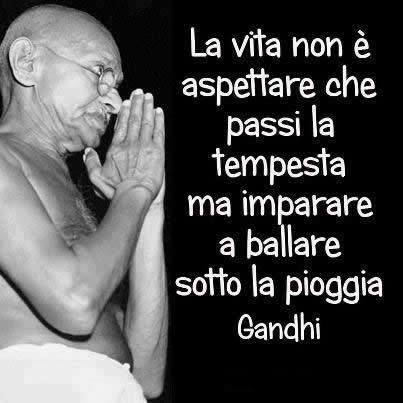
“Life is not waiting for the storm to pass but learning to dance in the rain”Gandhi
Immagine: https://www.pinterest.it
In particular, Gandhi succeeded in weaving three strands of activity:
- large-scale mobilisations, which employed nonviolent direct action (what Gandhi called satyagraha);
- efforts to build a lasting organisational structure that could influence the dominant institutions;
- the creation of alternatives outside the tradition (such as Gandhian ashrams and the ‘constructive programme’).
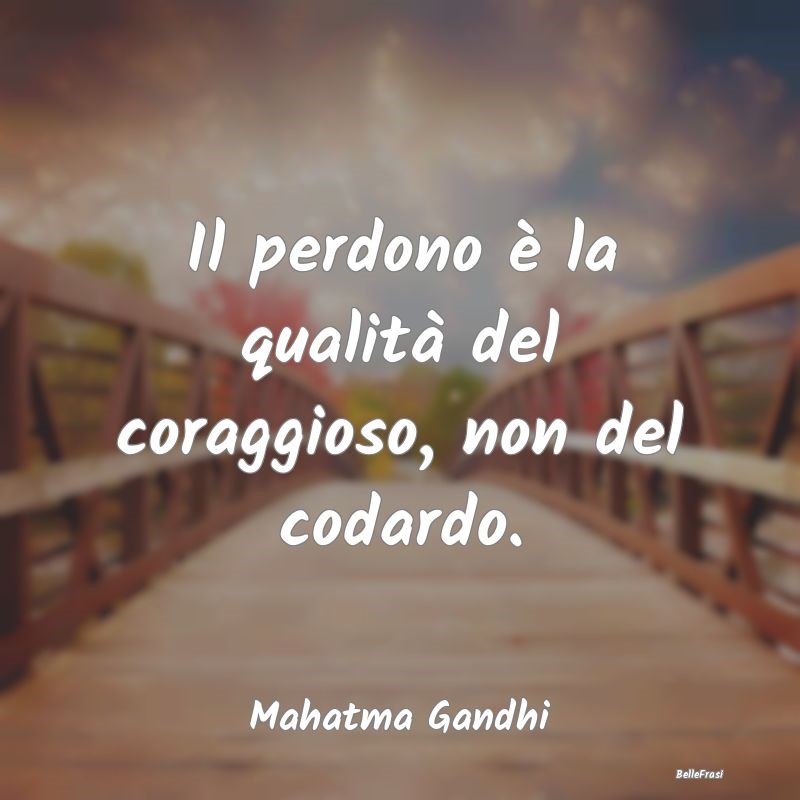
“Forgiveness is the quality of the brave not the coward”Mahatma Gandhi
Immagine: https://bfrasi.com
THE COURAGE TO ACT NON-VIOLENTLY IS URGENTLY NEEDED
War as such is a crime against humanity
LET US COMMEMORATE GANDHI WITH NONVIOLENT ACTION:
to promote unarmed and non-violent international interposition actions in conflict zones
(obviously also calling for UN intervention to this end)
promote dialogue between the conflicting parties
(every war must end in negotiation, and the sooner negotiations take place, the sooner the massacres cease)
substituting words for weapons, recognition for violence, reasonable compromise for barbaric killings.


